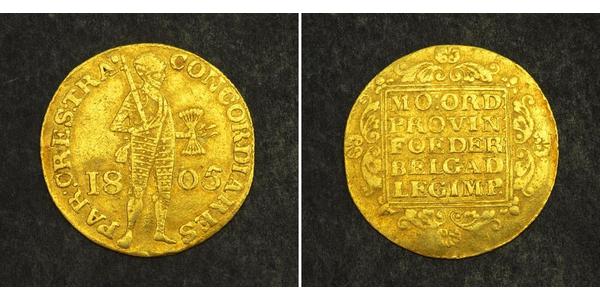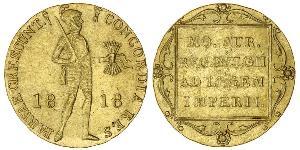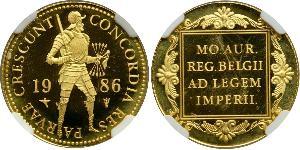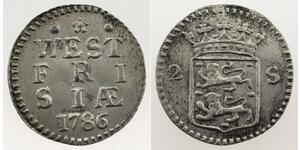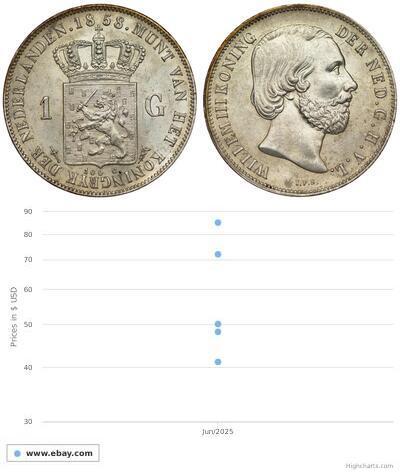(sold for $455.0)
1805, Russia, Alexander I. Dutch Type Gold Knight Ducat. St. Petersburg mint!
Condition: VF
Mint Year: 1805
Denomination: Gold Knight Ducat
Reference: Friedberg 151 (Russia), Bitkin 17 (R!), KM-26.3. RR!
Mint Place: St. Petersburg (Russia, imitating the Utrecht mint issue).
Weight: 3.18gm (the underweight and the large date confirm this rare immitative issue, secretly issued by the Russian government!)
Material: Pure Gold (.986)
Diameter: 21mm
Obverse: Knight standing right in armour, holding sword which rests on shoulder and a bundle of arrows. Date (18-05) split in fields.
Legend: CONCORDIA RES PAR : CRES : TRA (privy mark: shield)
Expanded Legend: CONCORDIA RESPARVAE CRESCUNT. TRAIECTUM
Translated: "Through concord little things grow (Union is strength), Utrecht"
Reverse: Legend in five lines inside ornate square. Fields around decorated with floral ornaments.
Legend: MO : ORD : PROVIN : FOEDER : BELG . AD LEG . IMP .
Expanded: "MOneta ORDinum PROVINciarum FOEDERatorum AD BELGicarum LEGem IMPerii"
Translated: "Coin of government of the provincial federation of Belgium Conforming with the law of the Imperial."
For your consideration a scarce gold ducat, struck at the St. Petersburg mint in Russia, imitating the Dutch Gold Knight ducat type. The underweight here confirms the immitative issue, but also the lightly mis-spaced legends (no interval between "CONCORDIA" and "RES" in obverse) are typical for the St. Petersburg mint, where the coin was struck. A lower weight would make a payment made in Dutch ducats more affordable for the Russian government, without having its own currency (the gold rouble) inflated. This is why this issue was struck in secret and with the Utrecht mint privy mark (shield). A scarce immitative Dutch type ducat and a very rare and attractive Russian gold coin!
Minted in Holland beginning in the 17th century to fuel its extraordinary tenure as the world's foremost commercial trader, the Netherlands one ducat gold coin offers both strong visual appeal and a scarcity value that could command a healthy premium in the years to come.
The first Netherlands trade ducat was issued in 1487 under Phillip the Fair and a coin very similar to the one depicted above has been minted more or less continuously from the early 1600s on. The net fine weight of 3.5 grams gold never changed to the modern era. The trade ducat is minted as a gold bullion coin even today. Only the Venetian ducat has enjoyed greater longevity.
The obverse of the famed ducat coin depicts a knight holding a bundle of arrows signifying the unity of the six northern provinces under the 1579 Union of Utrecht -- a declaration of independence from Spain. The motto Concordia Res Parvae Crescunt translates to "the union makes small things grow." The legend on the reverse translates to "money of the provinces of the United Netherlands according to the law of the empire."
Alexander I of Russia (Aleksandr I Pavlovich) (December 23, 1777 - November 19, 1825) served as Emperor of Russia from 23 March 1801 to 1 December 1825 and Ruler of Poland from 1815 to 1825, as well as the first Grand Duke of Finland.
He was born in Saint Petersburg to Grand Duke Paul Petrovich, later Emperor Paul I, and Maria Feodorovna, daughter of the Duke of Wuerttemberg. Alexander succeeded to the throne after his father was murdered, and ruled Russia during the chaotic period of the Napoleonic Wars. In the first half of his ruling Alexander tried to introduce liberal reforms, while in the second half he turned to a much more arbitrary manner of conduct, which led to the abolishing of many early reforms. In foreign policy Alexander gained certain success, having won several campaigns. In particular under his rule Russia acquired Finland and part of Poland. The strange contradictions of his character make Alexander one of the most interesting Tsars. Adding to this, his death was shrouded in mystery, and location of his body remains unknown.
Only 1$ shipping for each additional coin purchased!

|
Posted by:
anonymous 2016-03-16 |
2 Stuiver Netherlands Silver
group has 33 coins / 33 prices
⇑

